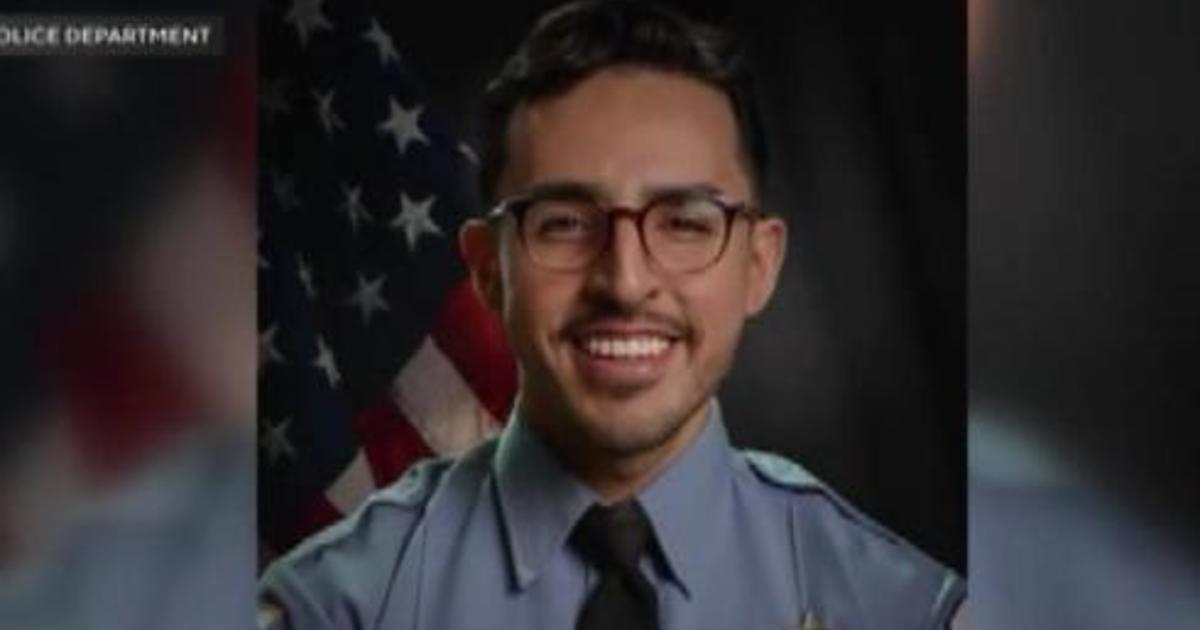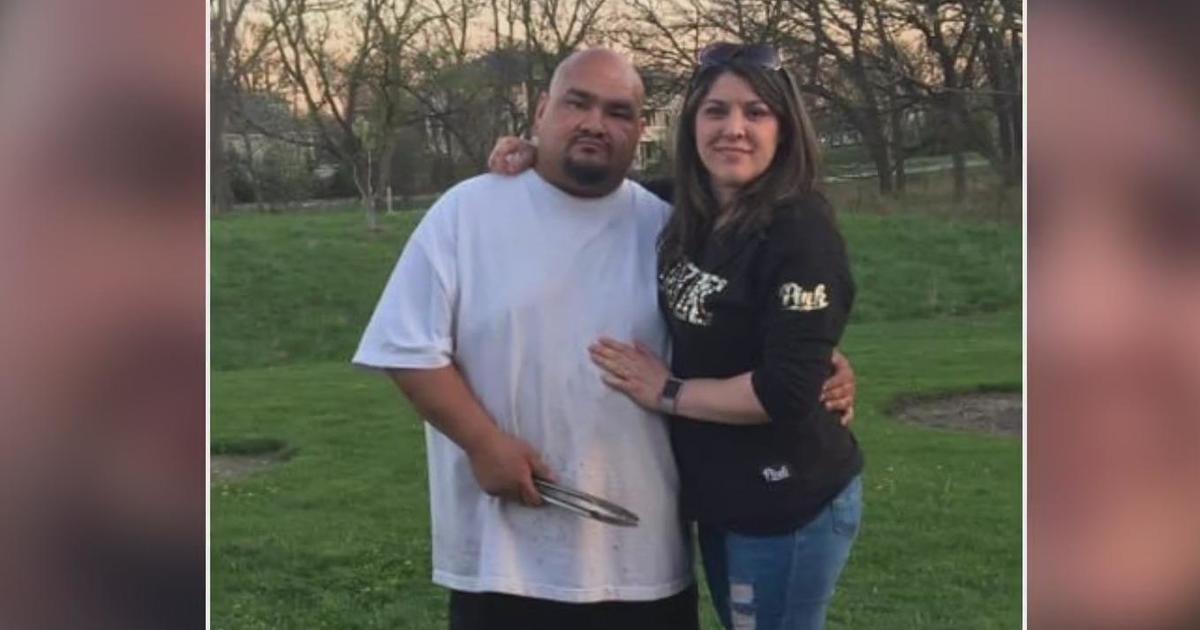Tylenol Murders: Chilling FBI interviews with prime suspect James Lewis released after his death
CHICAGO (CBS) -- CBS 2 obtained never-before-released video interviews with James Lewis, the prime suspect in the 1982 Tylenol murders, who describes in chilling detail how he believed the killer would have committed the crime.
This comes nearly one month after Lewis died of natural causes at his home in Cambridge, MA. The 76-year-old was never charged in connection with the killings.
Officials said they are still actively investigating the 40-year-old cold case. Before Lewis' death, police provided CBS 2 some records from the investigation, but this is the first time police released interviews with Lewis. CBS 2 obtained the videos and other records from the case through a Freedom of Information Act (FOIA) request.
In September of 1982, seven people across Chicagoland were killed after taking Tylenol capsules laced with cyanide. At the time, the capsules were not sealed shut, and the boxes did not have tamper proof or tamper evident packaging.
Outside of a handful of other persons of interest, Lewis was a prime suspect from the beginning. He was convicted of attempted extortion after sending a letter to Johnson & Johnson, the makers of Tylenol, saying he would stop the killings if $1 million was wired to a specific bank account. But police could never place Lewis in Chicago shortly before the murders, and he repeatedly denied he was the killer.
Together, the newly released video and documents paint a picture of how authorities worked for decades to build a case against Lewis. The records also show how the man so closely associated with the case had a pattern of researching, theorizing and demonstrating to investigators how he thought the killer could've gotten away with it.
Officials met with or had phone conversations with Lewis at least 34 times, beginning around the time officials re-opened the investigation in 2007, through 2009, records show. The meetings occurred at several hotels and restaurants in the Boston and Cambridge areas, where Lewis lived. They were all "consensually recorded," and present at each of the meetings were retired special FBI agent Roy Lane, as well as an undercover agent, the records said.
The video recording of one meeting at a hotel on Feb. 6, 2008 was provided to CBS 2 through a FOIA request. In that video, Lewis speculates to Lane that he believes someone as young as a teenager, potentially a 15-year-old, could have concocted a plan that left no traces of DNA on the bottles or cyanide-laced pills when they were placed on store shelves.
"[He] could have bought a bottle a month before and played with it until he got it right," Lewis said.
"Sounds to me like somebody did a pre-mix," he continued. "Open the bottle, toss [the capsules] in, walk to the next shelf, or the next store, or whatever. That would cut down their standing time at the shelf an awful lot."
"I want to get a mental picture of what you were just saying about, a person taking it out of their clothes and…taking capsules out of their clothes?" Lane said.
"Capsules in some form, either loose capsules out of a pocket, out of an envelope or…" Lewis said.
In the video, Lane asked Lewis whether a 15-year-old could pull off a plan involving cyanide and avoid being seen in the stores.
Lewis responded, "How do you know the person wasn't wearing gloves? Just because nobody saw – reported seeing somebody with gloves?"
"That's accurate," Lane said.
"Surgical gloves, the sandwich bag gloves, I don't know what they really are but they're made out of the same stuff as the plastic gloves," Lewis said.
"You can't really use your fingers for all that, right?" Lane asks.
At that point in the video, Lewis began to demonstrate.
"It depends on how tight the glove was, how much sophistication he did. Just dumping it…How much sophistication do you need?" he said. "Dumping, throw it in the pocket, dump more from another place and put the bottle [cap] on."
Lewis also suggested the killer could've used a paper clip to lift both the paper lid on the Tylenol box as well as the cotton to avoid leaving DNA.
"Everybody's got paperclips," he said.
"The clip goes underneath it, you lift…lid's like this, hooks over on the end, take the paper clip, put it in there, lift it up," Lewis demonstrated. "In real life, it's a much easier way to open a bottle, a box like that, like than with a [finger]nail."
"I think the person could do it in less than a minute right there in the store," Lewis added.
In another undated meeting recorded on video, Lewis talked at length about the timeline of two infamous letters he sent: the one demanding $1 million from Johnson & Johnson, and another threatening to attack the White House unless then-President Ronald Reagan changed his tax policies.
"I still picture — I still have a very vivid image of my hand when I'm writing it and seeing it in my hands as its developing but I don't remember the timeline," Lewis said.
"I had to rewrite it several times. I had to read it out loud and make sure it was readable and pretend like you're reading it to a 5-year-old and the 5-year-old understands it."
In the video, Lane tried to determine what day Lewis wrote the letter to Johnson & Johnson. That day is critical because if investigators proved Lewis wrote it before the murders happened, that could have implicated him.
But in the exchange with Lane, Lewis said he struggled to remember exactly when he wrote it. He also seemed to stumble on the timeline when pressed for details.
Lane: "Take the Reagan letter and go back three days?
Lewis: "Probably not as much, but at least two days.
Lane: "So you would have written, starting writing it, on about, on Sept. 30th?
Lewis: "If this is the, uh…"
Lane: "This is the post mark. So Thursday you would have started writing the…"
Lewis: "Probably Wednesday or Thursday."
Lewis: "I see what your quandary [is.] It looks like my memory is [inaudible]. Maybe I didn't work on it for three days, it just seemed like I worked on it for three days, cause that's the way I usually do things. But uh… so it's what I told you but it's impossible to have happened because I [inaudible]. Until you pointed that out I had no idea that uh…that uh…I've been telling myself for 25 years that I worked on it for 3 days… I don' t know but it's impossible [inaudible]."
Lane: "That's the quandary, so that's what I'm trying to say."
Lewis: "I see what your big puzzle is now, 'cause you clearly had that in mind. I didn't have that in mind. Until you pointed it out, I didn't know it was a conflict in my memory."
Lane: "Yeah, yeah. Because basically, you would have written the letter the same day they were dying."
Lewis: "Yeah, well that didn't happen. Foggy memory, and 25 years. If you would have asked me that and pointed that out. I would have stuck to that under oath. I would have sworn it took three days, and that's impossible."
In that same meeting, Lewis also said he tried to avoid leaving evidence behind when mailing the letters because "he knew that could be traced." He was worried, he said, about being photographed by security cameras and chose to drop the letters at a post office "quite aways" from where he lived.
"I didn't want them to know precisely what part of town I was living in," Lewis continued. "There might be a post box right outside my apartment. I knew not to use that one."
Records obtained by CBS 2 also show Lewis gave investigators several items as part of these conversations, including a folder containing articles related to the Tylenol murders, as well as an original artwork titled "Tylenol Suspect 4 Life."
These meetings weren't the first time Lewis speculated about how the killings happened. In an interview with CBS 2 last year, former assistant U.S. Attorney Jeremy Margolis, who prosecuted Lewis for extortion, said the man first offered his assistance to the FBI after he was convicted for writing the letter to Johnson & Johnson.
"He did a lot of drawings, a lot of pen and ink drawings, proposing how the killer might have filled these capsules with the [cyanide] that killed these people," Margolis said.
That includes an illustration Lewis made called the "drilled board method." The process involved drilling holes into a plywood contraption and placing the bottom of the capsules into the holes. After placing cyanide on top of the board, Lewis said the poison could then be scraped across with a bread knife, before putting the tops of the capsules back on and placing them into the Tylenol bottles.
And in 2010, about a year after the FBI raided Lewis' Cambridge home, investigators found his fingerprints on a book titled, "Handbook of Poisonings," according to police records.
Last September, investigators re-interviewed Lewis again 40 years after the murders, but did not publicly release information about that interview.
When Lewis died in July, sources told CBS 2 it was a frustrating day for law enforcement, who've been investigating the case for decades.
"I was hoping to see justice," one source told CBS 2.
CBS 2's reporting uncovered officials felt they had sufficient circumstantial evidence for Lewis to be charged. But prosecutors never filed charges against him, and they have not commented publicly about why.





